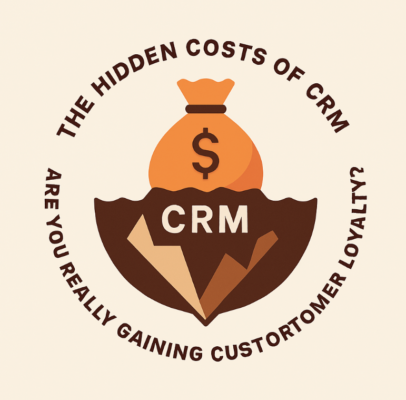
Customer Relationship Management (CRM) systems are widely considered essential tools for businesses looking to improve customer interactions, increase sales, and foster loyalty. However, while CRM software offers numerous benefits, there are often hidden costs—both financial and strategic—that can undermine the very loyalty businesses seek to build. Are companies truly gaining customer loyalty, or are they simply automating relationships at the expense of genuine engagement?
The Financial Costs Beyond Licensing Fees
Many businesses underestimate the full financial investment required to implement a CRM system effectively. While software licensing fees are the most obvious expense, hidden costs can include:
- Customization & Integration: Tailoring a CRM to fit a business’s specific needs can be expensive, especially when integrating with existing tools and databases.
- Training & Adoption: Employees need time and resources to learn and adapt to the new system, often requiring ongoing support and retraining.
- Maintenance & Upgrades: Regular updates, security patches, and new feature implementations add to long-term operational costs.
These expenses can strain budgets, particularly for small and medium-sized businesses, leading them to focus on CRM management rather than customer relationship-building.
The Risk of Over-Automation
One of the biggest challenges with CRM systems is the tendency to over-automate customer interactions. While automation can improve efficiency, relying too heavily on AI-driven responses, chatbots, and templated emails can make customers feel like just another number. Genuine human connection is a critical factor in customer loyalty, and over-automating CRM processes can result in:
- Impersonal Interactions: Customers may receive responses that lack the nuance and empathy of human communication.
- Frustrating Customer Service: Automated workflows can sometimes misinterpret customer needs, leading to dissatisfaction and churn.
- Loss of Brand Identity: A standardized CRM approach can dilute a company’s unique brand voice, making interactions feel generic.
Data Overload: More Information, Less Insight
CRM systems collect vast amounts of customer data, but more data does not always mean better decision-making. Companies often struggle with:
- Information Silos: Data stored across multiple systems can make it difficult to obtain a holistic view of the customer.
- Irrelevant Insights: Collecting excessive data without clear objectives can lead to wasted resources on reports that do not contribute to meaningful strategies.
- Privacy Concerns: Poor data management and security practices can lead to breaches, damaging customer trust and brand reputation.
The Illusion of Customer Loyalty
CRM tools are often used to track repeat purchases and engagement, but does this truly indicate loyalty? Many customers return to a brand due to habit, discounts, or convenience—not necessarily because they feel an emotional connection. CRM-driven incentives such as points-based loyalty programs can create a transactional relationship rather than a meaningful one. True customer loyalty comes from:
- Personalized, Human-Centric Engagement: Beyond automated emails, customers appreciate genuine conversations and personalized recommendations.
- Emotional Connections: Brands that align with customers’ values and demonstrate authenticity foster stronger bonds.
- Exceptional Customer Service: Quick, thoughtful, and effective issue resolution builds trust and long-term relationships.
Conclusion
CRM systems are valuable tools, but they are not a guaranteed path to customer loyalty. Businesses must be aware of the hidden financial costs, the risks of over-automation, and the challenges of managing vast amounts of data. True customer loyalty is built through authentic engagement, emotional connections, and exceptional service—elements that no software can fully replace. Companies must strike the right balance between technology and human touch to create lasting relationships with their customers.